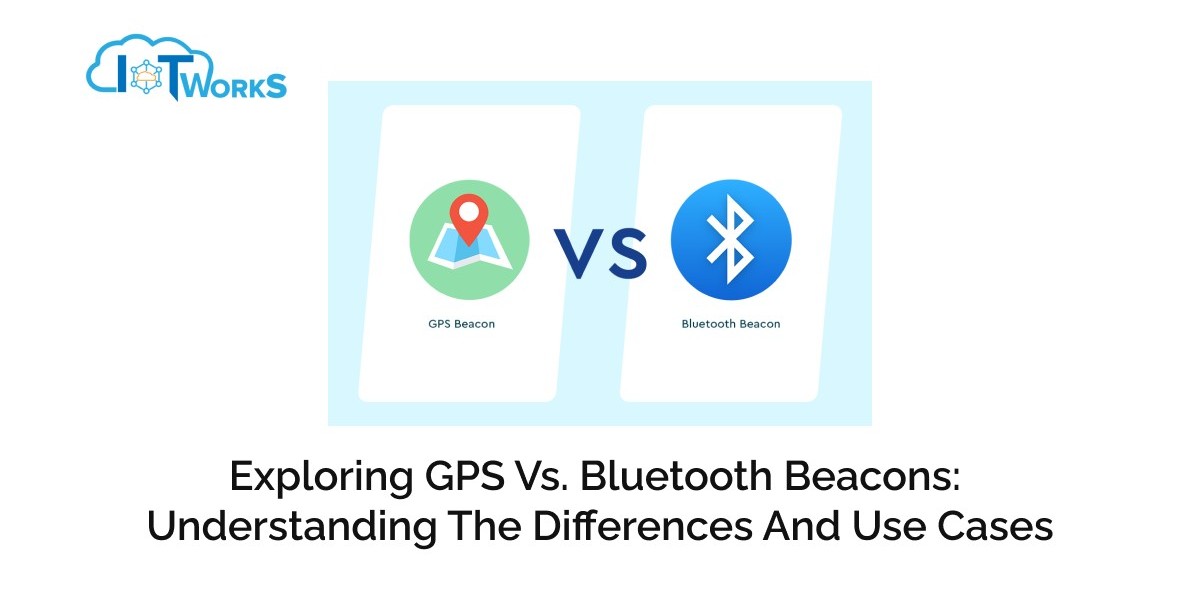Bluetooth beacons are small gadgets that broadcast signals to nearby Bluetooth-capable gadgets. They are widely used in proximity marketing, interior navigation, asset monitoring, and other location-based applications. GPS beacons have grown in popularity recently, and consumers may be unsure which kind is best for their requirements.
This blog will discuss the distinctions between Bluetooth and GPS tracking beacons and which apps work well with each kind of beacon.
What is a Bluetooth Beacon?
Bluetooth Low Energy, or BLE, offers several benefits over GPS. Wearable technology, beacons, retail, and other industries all use BLE. A BLE beacon is an IoT device constantly sending a radio signal to identify itself. Because of their minimal energy consumption, BLE beacons are an excellent option for tracking digital contacts. They can track with the least amount of necessary data transmission.
What is a GPS Beacon?
These are small, lightweight gadgets that locate themselves via Global Positioning System (GPS) technology. They are useful for finding people, cars, and other items. A GPS beacon tracker may create geofences, or virtual walls surrounding a real place. A GPS beacon can sound an alert or take action, such as turning on a device or sending a notice to a mobile app, when it senses that it has passed a geofence border.
Use Cases and Applications of Bluetooth Beacons and GPS Beacons
The two distinct navigation systems, GPS and BLE, have many applications. The unique needs of your company and applications must be considered when choosing between BLE and GPS beacons.
BLE beacon
Beacons come in many shapes and sizes, such as wristbands, circular ones, and key fobs. They send out a radio signal that can readily penetrate through substantial barriers like pillars and iron gates. BLE is more appropriate for indoor, outdoor location, and proximity marketing solutions, such as those offered by IoT-WorkS. Their precision is better than that of GPS beacons, but their range is lower, which makes them perfect for applications that need accurate position data.
One instance is the use of Bluetooth beacons in proximity marketing. A device in the user's pocket records the Bluetooth signal being provided in coded form when a person approaches a site equipped with beacons, such as a nearby store. An app that supports beacons subsequently decodes the recorded signal.
If the software is successful in decoding these signals, it uses location-aware notification to notify the device user of his precise location with the store's beacons. For example, the app can broadcast a special deal every time a customer walks into the shampoo aisle of a store by coordinating with the nearest beacon.
GPS beacon
GPS beacons can be used for outdoor asset tracking, such as tracking the whereabouts of machinery, goods, and cars. Geofencing, another useful application for GPS beacons, can be applied to perimeter security and fleet management. For instance, an organisation that owns a fleet of cars could install geofences around its depots or other specified locations. The business may be alerted if a vehicle equipped with a GPS beacon enters or exits a geofence, enabling it to better monitor its assets' movement.
Fleet management is one application of a GPS iBeacon in action. Businesses frequently utilise beacons to monitor the current state of their fleet of cars. Fleet managers can lower operating costs and enhance fleet safety by tracking the whereabouts and status of their drivers through the installation of GPS devices in fleet cars, which can assist drivers in optimising routes.
Comparison Between Bluetooth Beacons and GPS Beacons
Despite their apparent similarities, BLE and GPS beacons differ in key ways. Let's compare the features of GPS and Bluetooth beacons in a table so that users may decide which kind of beacon is best for their application:
FEATURE | GPS BEACON | BLUETOOTH BEACON |
Technology | Satellites | Bluetooth Low power technology |
Range | Up to 10km | Up to 100m |
Location accuracy | Low | High |
Power consumption | High | low |
Compatibility with devices | GPS-enabled devices | Bluetooth-enabled devices |
Cost | High | Low |
Security | Very secure | Secure |
Scalability density | Low | High |
Installation | More complex | Easy |
Line of sight | Required | Not required |
Suitable applications | Fleet management, Mapping and surveying, Keeping track of children, Geofencing | Indoor navigation, Proximity marketing, Asset tracking, Real-time location services |
1. Technology
The primary and most significant distinction between BLE and GPS beacons is how they function. GPS beacons depend on a constellation of satellites orbiting the Earth that continually transmit identification signals. These satellites can send out signals that trackers can use to identify their location on Earth through triangulation. Conversely, Bluetooth beacons run on Bluetooth Low Power technology when paired with a mobile device. The item can be located if it is within signal range, or you can use your phone's location service to see the last place the item was in before losing connection to the mobile terminal.
2. Range
The range and precision of the GPS and Bluetooth beacons' location also varied. With their often limited range of about 100 meters, Bluetooth beacons are helpful for interior navigation. However, signal strength and interference may affect how accurately a Bluetooth beacon locates itself. On the other hand, the range of GPS locating beacon technology is virtually limitless. This may make GPS beacons a better option for tracking remotely outside.
3. Power Consumption
Another distinction between GPS and Bluetooth beacons is power consumption. Generally speaking, GPS beacons use more energy than Bluetooth beacons, which may shorten their battery life. Other Bluetooth beacons may use extremely little power, enabling them to operate on a single battery for months or even years. This makes them perfect for situations where it is not practical to change the batteries often or when the beacons must be positioned in difficult-to-reach regions.
4. Cost
One of Bluetooth beacons' key benefits is their affordability. They are usually between $10 and $100, and they are far less expensive to create than GPS beacons. Therefore, they are perfect in situations where price is the primary factor. Depending on the device, they also have a prolonged battery life, which may last for many years.
5. Security
Ultimately, security is a crucial factor to consider when deciding between Bluetooth and GPS beacons.
The receivers and communication methods built into the manufacturer's servers are the primary source of the privacy and security hazards connected with GPS. There are very few security issues with GPS beacons. To safeguard GPS receivers, the majority of manufacturers now use a variety of authentication and storage techniques.
One of the common threats to the security of BLE beacons is beacon hacking. Although the majority of beacon manufacturers now have specific precautions in place to prevent this from happening, hackers can still identify beacons with weak security in public locations. Understanding that BLE beacons acquired from reputable and trustworthy vendors, such as IoT-WorkS, is completely safe is critical.
Which Technology to Choose?
When it comes to navigation, BLE and GPS both have advantages and disadvantages. While GPS is ideal for tracking objects in large, broad locations, BLE is better for tracking nearby assets. The technology that is ultimately chosen will be determined by the unique use cases that the company has.
Thus, a thorough analysis of the application requirements is necessary when deciding between GPS and Bluetooth beacons. Factors including accuracy, battery life, cost, range, and installation difficulty should be considered. Enjoy the advantages of IoT connectivity by choosing tailored beacon solutions with the assistance of a reliable beacon supplier like IoT-WorkS.








